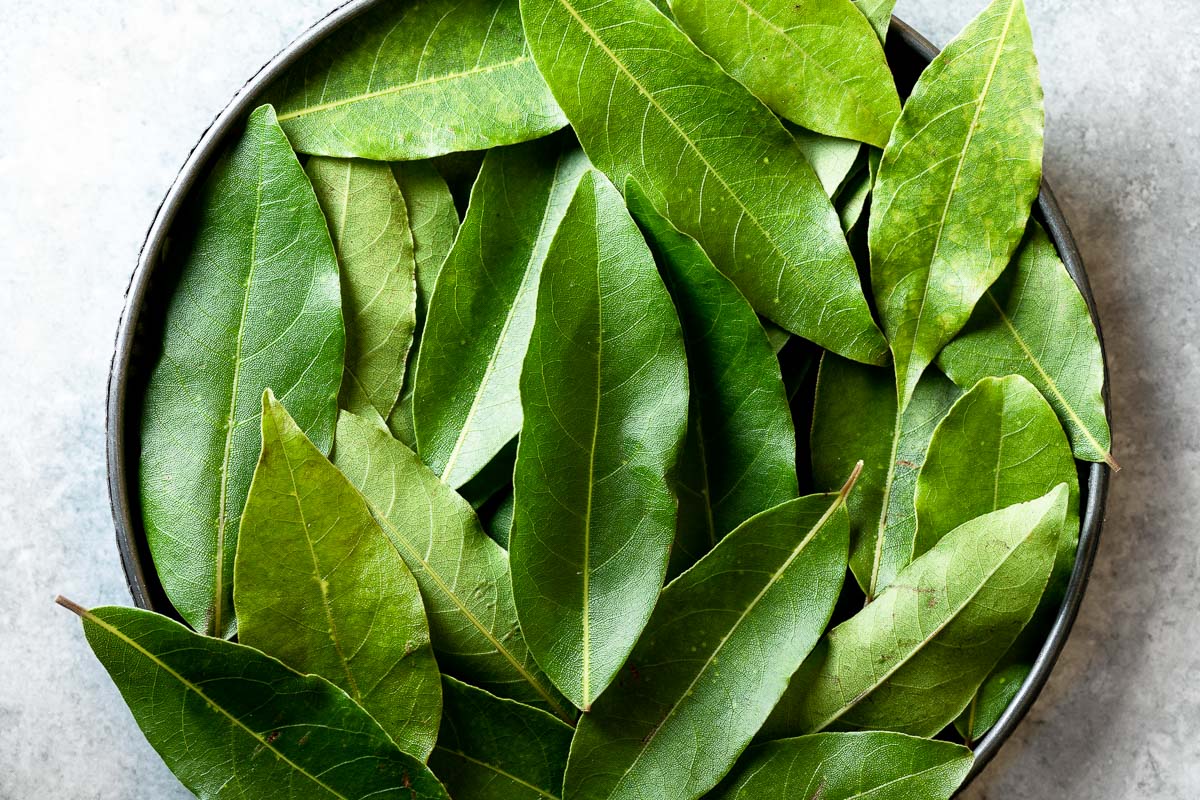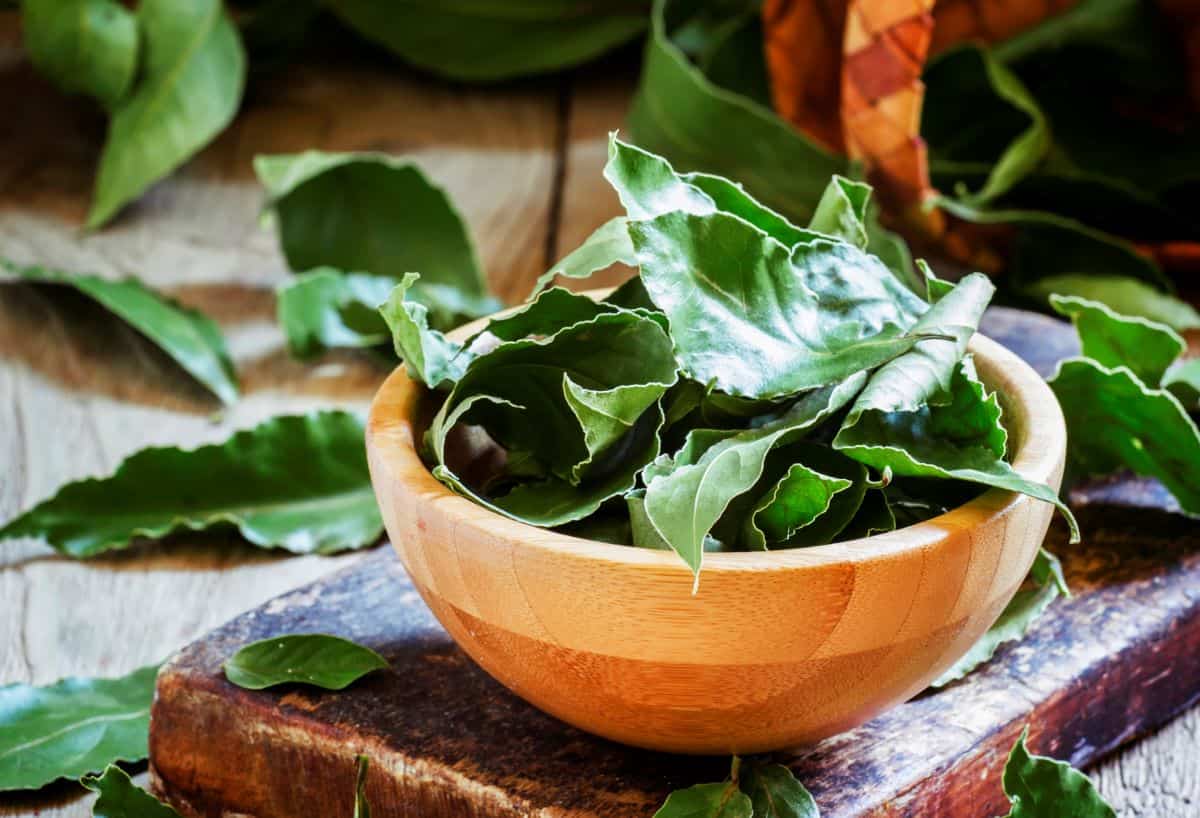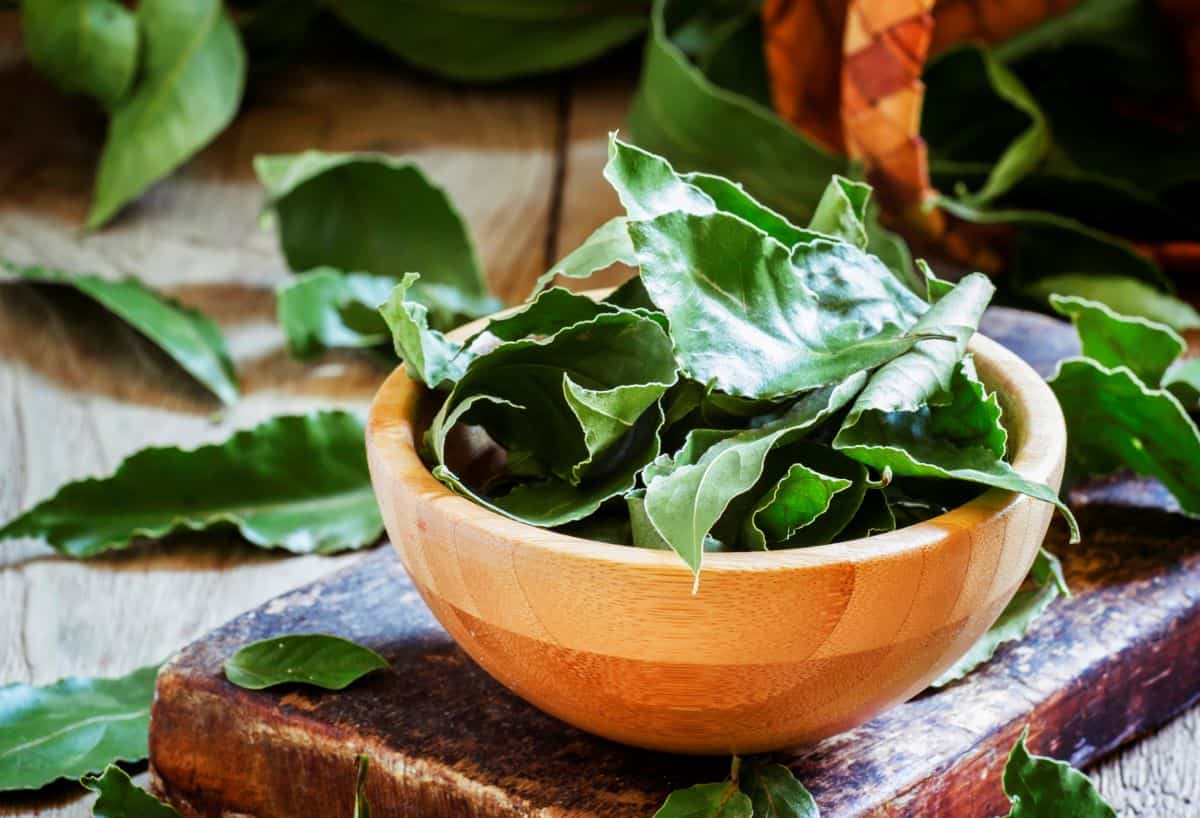How to Get Amazing Results with Bay Leaf Substitutes delves into the world of culinary creativity, exploring the diverse options available when the iconic bay leaf is unavailable. From understanding the nuances of flavor profiles to discovering unconventional substitutes, this guide empowers cooks of all levels to achieve remarkable results in their kitchens.
Bay leaves, with their earthy and slightly bitter aroma, are a staple in many cuisines around the world. But what happens when you find yourself without this essential ingredient? Fear not, as a world of alternatives awaits, each offering unique flavor characteristics that can elevate your dishes.
This guide provides a comprehensive exploration of bay leaf substitutes, empowering you to confidently recreate your favorite recipes and discover new culinary possibilities.
Understanding Bay Leaf Substitutes
Bay leaves, the dried leaves of the bay laurel tree, are a staple in many cuisines around the world. Their distinctive aroma and flavor add depth and complexity to dishes, particularly stews, soups, and sauces. However, finding fresh or dried bay leaves can be challenging at times.
Fortunately, several substitutes can replicate the flavor and aroma of bay leaves, allowing you to achieve the desired taste in your culinary creations.
Bay Leaf Flavor Profile
Bay leaves possess a unique flavor profile that combines earthy, slightly bitter, and slightly sweet notes. They are known for their distinct aroma, which is often described as camphoraceous and slightly medicinal. This complex flavor profile makes bay leaves a versatile ingredient that can enhance a wide range of dishes.
Common Substitutes for Bay Leaves
Several alternatives can be used to replace bay leaves in recipes, each offering a slightly different flavor profile. These substitutes are generally readily available and can be easily incorporated into your cooking.
- Dried Thyme:This herb offers a similar earthy and slightly bitter flavor to bay leaves, making it a suitable substitute in many dishes. It is especially effective in soups, stews, and sauces.
- Dried Oregano:Another excellent alternative, oregano provides a slightly more pungent flavor than bay leaves, with notes of earthiness and spice. It is particularly well-suited for Mediterranean dishes and tomato-based sauces.
- Dried Rosemary:This herb offers a strong, piney, and slightly camphoraceous flavor that can complement the taste of bay leaves in many recipes. It is particularly effective in roasted meats, stews, and soups.
- Dried Marjoram:Marjoram has a mild, slightly sweet flavor that can be used to replace bay leaves in dishes where a delicate flavor is desired. It is well-suited for chicken, fish, and vegetable dishes.
- Fresh Parsley:Although parsley has a different flavor profile than bay leaves, it can be used as a substitute in some dishes, particularly those where a fresh, herbaceous flavor is desired.
- Bay Leaf Extract:This concentrated extract provides the essence of bay leaves without the need for the actual leaves. It is particularly useful in dishes where the presence of the leaves is not desired, such as in sauces or marinades.
Substitutes for Flavor and Aroma: How To Get Amazing Results With Bay Leaf Substitutes

Bay leaves, with their earthy, slightly bitter, and subtly sweet flavor, have long been a staple in culinary traditions around the world. But what if you find yourself without this aromatic herb? Don’t despair! A variety of substitutes can mimic the unique flavor and aroma of bay leaves, allowing you to achieve similar results in your dishes.
While exploring culinary substitutes for bay leaves, you might find yourself drawn to the world of herbs and their propagation. If you’re looking for a comprehensive guide on how to grow your own aromatic plants, check out The Essential Guide to Rodgers Plant Propagation.
This resource provides detailed instructions on techniques like cuttings and layering, which can help you cultivate your own herbs, including those that can be used as bay leaf substitutes.
Comparing Flavor Profiles of Bay Leaf Substitutes
Understanding the flavor profiles of different substitutes is key to choosing the right one for your recipe. Some substitutes offer a close resemblance to bay leaves, while others bring their own unique twist.
- Dried Thyme:With a woody, earthy, and slightly pungent flavor, dried thyme is a good substitute for bay leaves in savory dishes. It lacks the sweetness of bay leaves but offers a similar depth of flavor.
- Dried Oregano:Similar to thyme, dried oregano has a warm, earthy, and slightly bitter flavor that can complement many dishes. It’s a good choice for Mediterranean and Italian cuisine.
- Dried Rosemary:Rosemary’s piney, slightly camphoraceous flavor and aroma make it a suitable substitute for bay leaves in certain dishes, particularly those with a Mediterranean or Italian influence.
- Dried Marjoram:Marjoram has a sweet, slightly peppery flavor that can complement dishes like stews, soups, and sauces. While it lacks the earthy depth of bay leaves, it offers a similar warmth.
- Allspice Berries:Allspice berries offer a unique combination of flavors, including clove, nutmeg, and pepper. While not a direct substitute for bay leaves, they can provide a warm, earthy, and slightly spicy flavor that complements certain dishes.
Substitutes for Specific Dishes
Bay leaves are a common ingredient in many cuisines, adding a distinctive flavor and aroma to dishes. However, finding a suitable substitute for bay leaves can be challenging, especially when considering specific dishes. The choice of substitute depends on the dish’s flavor profile and the desired outcome.
This section explores the best substitutes for bay leaves in various culinary applications.
Bay Leaf Substitutes in Stews and Soups
Stews and soups are often enhanced by the earthy and slightly bitter notes of bay leaves. However, if bay leaves are unavailable, several substitutes can be used to achieve similar results.
- Thyme:Thyme is a versatile herb that can provide a similar earthy flavor to bay leaves. It is a good choice for hearty stews and soups.
- Rosemary:Rosemary offers a more intense and slightly piney flavor that can complement the richness of stews and soups.
- Marjoram:Marjoram has a milder, slightly sweet flavor that can add depth to stews and soups without being overpowering.
- Dried Herbs Blend:A mixture of dried herbs, such as thyme, rosemary, and oregano, can be used to create a complex flavor profile that resembles bay leaves.
Bay Leaf Substitutes in Sauces and Marinades
Sauces and marinades often benefit from the subtle complexity that bay leaves provide. When substituting bay leaves in these applications, consider the following options:
- Dried Herbs:A blend of dried herbs, such as thyme, rosemary, and oregano, can mimic the earthy notes of bay leaves and add depth to sauces and marinades.
- Spice Blends:Pre-made spice blends, such as Herbes de Provence or Italian seasoning, can provide a complex flavor profile that complements sauces and marinades.
- Citrus Zest:Lemon or orange zest can add a bright and citrusy note that can be used in place of bay leaves in certain sauces and marinades.
- Whole Cloves:A few whole cloves can provide a warm and slightly spicy flavor that can complement the richness of sauces and marinades.
Bay Leaf Substitutes in Different Cuisines
The best substitute for bay leaves can vary depending on the specific cuisine.
Cuisine |
Best Substitute |
Explanation |
|---|---|---|
French |
Thyme |
Thyme is a staple herb in French cuisine and can provide a similar earthy flavor to bay leaves. |
Italian |
Rosemary |
Rosemary is commonly used in Italian cooking and complements the flavors of many Italian dishes. |
Indian |
Whole Cloves |
Whole cloves are a common spice in Indian cuisine and can add a warm and slightly spicy flavor that is similar to bay leaves. |
Chinese |
Star Anise |
Star anise is a common spice in Chinese cuisine and can provide a slightly licorice-like flavor that is similar to bay leaves. |
Creative Alternatives to Bay Leaves
While bay leaves are a classic culinary staple, there are many creative alternatives that can add unique and exciting flavors to your dishes. These alternatives can be found in your spice cabinet or at your local grocery store. Exploring these options can lead to culinary discoveries and elevate your cooking to new heights.
Unconventional Substitutes for Bay Leaves
Beyond the traditional herbs and spices, there are several unconventional substitutes for bay leaves that can add a unique twist to your dishes. These alternatives offer different flavor profiles and can be used to create distinct and memorable dishes.
- Dried Mushrooms:Certain dried mushrooms, such as porcini or shiitake, can provide a savory and earthy flavor similar to bay leaves. They can be used whole or ground to add depth and complexity to stews, soups, and sauces.
- Citrus Peels:The zest of citrus fruits like lemon, orange, or grapefruit can offer a bright and refreshing flavor that complements many dishes. Their aromatic oils can add a citrusy note that pairs well with seafood, poultry, and desserts.
- Star Anise:This spice, with its distinctive star shape, provides a licorice-like flavor and a subtle sweetness that can enhance the flavor of braised meats, stews, and Asian-inspired dishes.
- Black Peppercorns:While primarily known for their spiciness, black peppercorns can also add a subtle earthiness and complexity to dishes. They can be used whole or ground and are particularly effective in savory dishes like soups, stews, and sauces.
Recipe with a Bay Leaf Substitute
Chicken with Lemon and Rosemary
This recipe uses rosemary as a substitute for bay leaves, adding a fragrant and herbaceous note to the chicken. The lemon zest and juice provide a bright and refreshing flavor, complementing the rosemary and creating a delicious and aromatic dish.
While bay leaf substitutes offer a similar flavor profile, achieving the best results requires understanding the nuances of each alternative. Just as understanding the unique needs of columbine plants, like those outlined in Columbine Plants Success Secrets: How to Achieve Lush Growth , is crucial for their flourishing, so too is recognizing the specific qualities of each bay leaf substitute.
By carefully considering the substitution’s flavor, aroma, and cooking properties, you can ensure a dish’s success and unlock the full potential of your culinary creativity.
- Ingredients:
- 4 boneless, skinless chicken breasts
- 1 tablespoon olive oil
- 1 teaspoon salt
- 1/2 teaspoon black pepper
- 1/4 cup chopped fresh rosemary
- 1 lemon, zested and juiced
- 1/4 cup chicken broth
- Instructions:
- Preheat oven to 375 degrees Fahrenheit (190 degrees Celsius).
- In a large bowl, combine the chicken breasts, olive oil, salt, pepper, rosemary, lemon zest, and lemon juice. Mix well to coat the chicken.
- Transfer the chicken to a baking dish and pour the chicken broth over the chicken.
- Bake for 25-30 minutes, or until the chicken is cooked through and the juices run clear.
- Serve immediately.
Tips for Experimenting with Flavor Combinations
When substituting for bay leaves, it’s essential to consider the flavor profile of the dish and choose an alternative that complements the other ingredients. Experimenting with different combinations can lead to exciting culinary discoveries.
- Consider the Dish:If you’re making a Mediterranean dish, using dried oregano or thyme might be suitable. For Asian-inspired dishes, star anise or ginger could be good options.
- Start Small:When trying a new substitute, start with a small amount and adjust as needed. It’s better to err on the side of caution and add more if necessary.
- Taste as You Go:As you cook, taste the dish and adjust the seasoning accordingly. This will help you achieve the desired flavor profile.
Bay Leaf Substitutes: A Guide for Beginners

Navigating the world of bay leaf substitutes can feel daunting, especially for novice cooks. However, with a little guidance, you can confidently swap bay leaves and achieve delicious results in your culinary creations. This guide provides a step-by-step approach to using bay leaf substitutes, ensuring you can enjoy the depth and complexity they bring to your dishes.
Using Bay Leaf Substitutes in Cooking, How to Get Amazing Results with Bay Leaf Substitutes
Incorporating bay leaf substitutes into your cooking requires a slight adjustment in your approach. While bay leaves are typically added whole and removed before serving, substitutes often need to be finely chopped or ground for optimal flavor extraction. The following steps Artikel a general approach to using bay leaf substitutes:
- Choose the Right Substitute:Begin by selecting a substitute that aligns with the flavor profile of your dish. For instance, thyme or rosemary might be suitable for savory dishes, while citrus zest or cinnamon could enhance sweet recipes.
- Prepare the Substitute:Depending on the substitute, you may need to chop, grind, or crush it to release its flavors effectively. Finely chopping herbs or spices is generally recommended, while citrus zest can be used as is.
- Add at the Right Time:The timing of adding the substitute is crucial. For most recipes, it’s best to add it towards the end of cooking, allowing the flavors to infuse without becoming overpowering. However, some substitutes, like citrus zest, might be added earlier to enhance the overall aroma.
- Adjust the Quantity:Bay leaf substitutes often have different flavor intensities compared to bay leaves. Start with a small amount and taste as you go, adjusting the quantity based on your preference. Remember, it’s easier to add more than to remove it.
- Remove or Strain:Some substitutes, like herbs, may need to be removed before serving to avoid a strong, bitter taste. Others, like citrus zest, can be left in for a lingering flavor. If you are unsure, it’s always best to strain the dish after cooking to remove any lingering bits of the substitute.
Incorporating Substitutes into Cooking Techniques
The method of incorporating bay leaf substitutes varies depending on the cooking technique employed. Here’s how to use substitutes in different cooking scenarios:
- Sautéing:Add the substitute towards the end of the sautéing process to infuse the flavors without overpowering the dish.
- Stewing:Incorporate the substitute during the initial browning stage of the stew, allowing the flavors to meld with the other ingredients over time.
- Baking:Add the substitute to the dry ingredients, ensuring it is evenly distributed throughout the mixture.
- Boiling:Add the substitute during the initial boiling stage, allowing the flavors to infuse the liquid as the dish simmers.
- Broiling:Sprinkle the substitute over the food during the last few minutes of broiling to add a final burst of flavor.
Tips for Beginners
For beginners, here are some practical tips to ensure success when using bay leaf substitutes:
- Start with Small Amounts:It’s always better to err on the side of caution when using substitutes. Start with a small amount and gradually increase it to your liking.
- Taste as You Go:Regular tasting is crucial to ensure the flavors are balanced and to your preference. Adjust the quantity of the substitute accordingly.
- Don’t Be Afraid to Experiment:Culinary exploration is encouraged! Don’t be afraid to try different substitutes and combinations to discover your favorite flavor profiles.
- Seek Inspiration:Look for recipes that specifically use bay leaf substitutes for guidance and inspiration. Many online resources and cookbooks offer creative alternatives to traditional bay leaves.
Wrap-Up
Mastering the art of bay leaf substitutes unlocks a world of culinary creativity. With this guide, you can confidently navigate the diverse range of alternatives, achieving the desired flavor profiles in your dishes. From classic options like thyme and rosemary to unexpected additions like citrus peels and star anise, the possibilities are endless.
Embrace the versatility of substitutes and elevate your cooking to new heights.
Detailed FAQs
Are all bay leaf substitutes interchangeable?
While many substitutes offer similar flavor profiles, they each have unique nuances. Consider the specific dish and desired flavor when choosing a substitute.
Can I use bay leaf substitutes in any recipe?
While substitutes can work in many dishes, some recipes may require the specific characteristics of bay leaves. It’s best to experiment and find what works best for your taste.
How long should I cook bay leaf substitutes?
The cooking time for substitutes varies depending on the type. Refer to specific instructions or experiment to find the ideal cooking time for your recipe.
